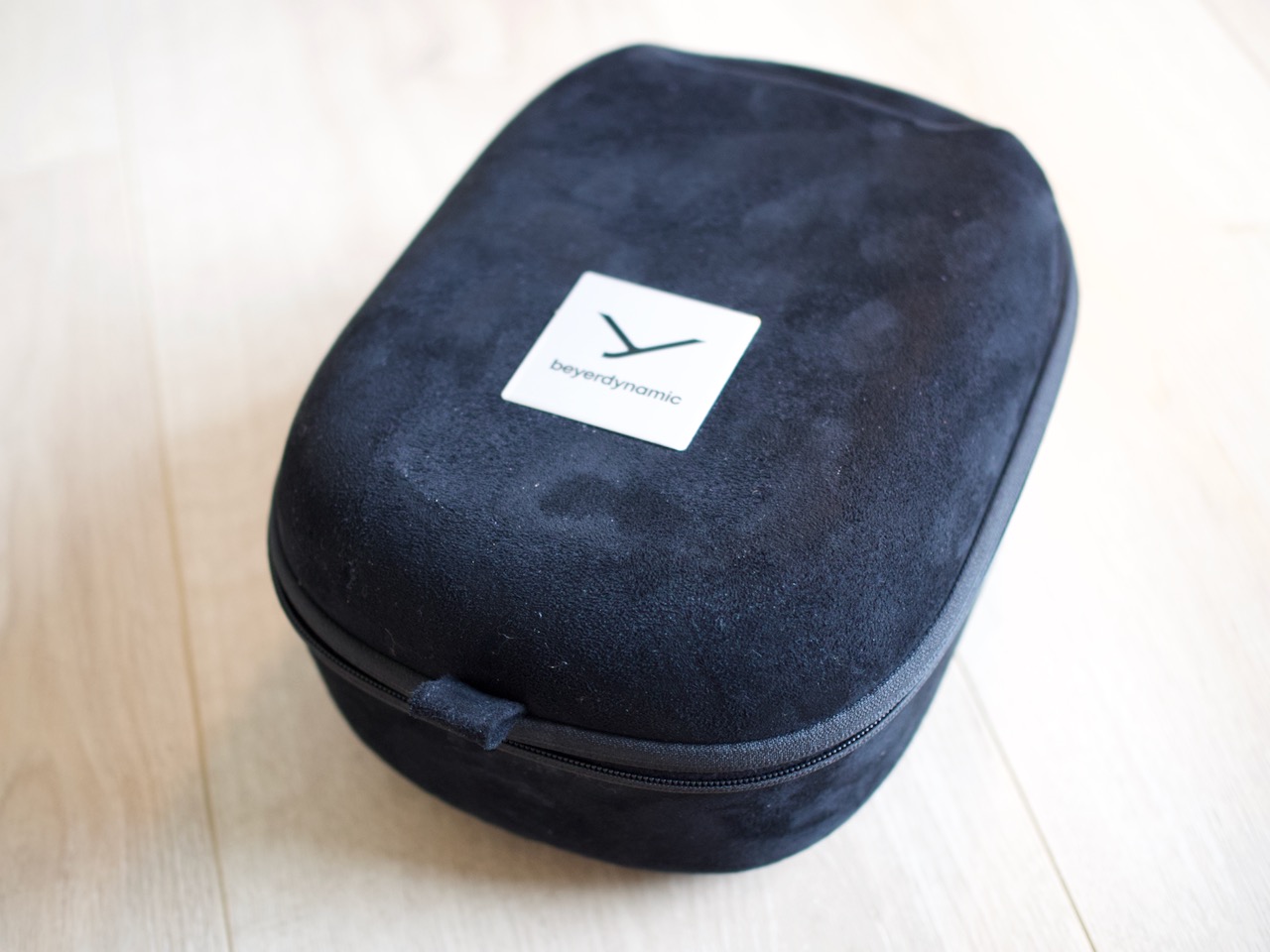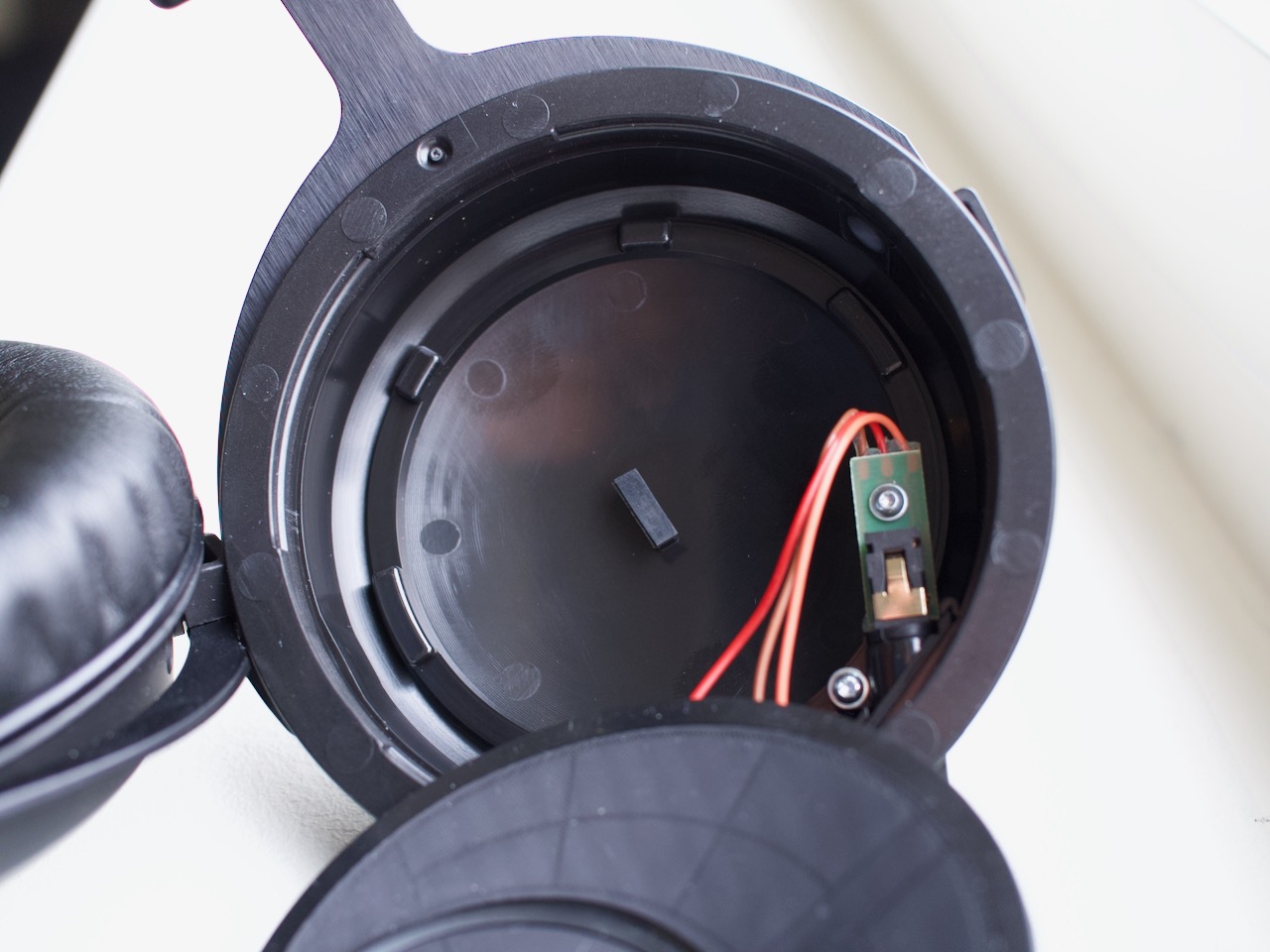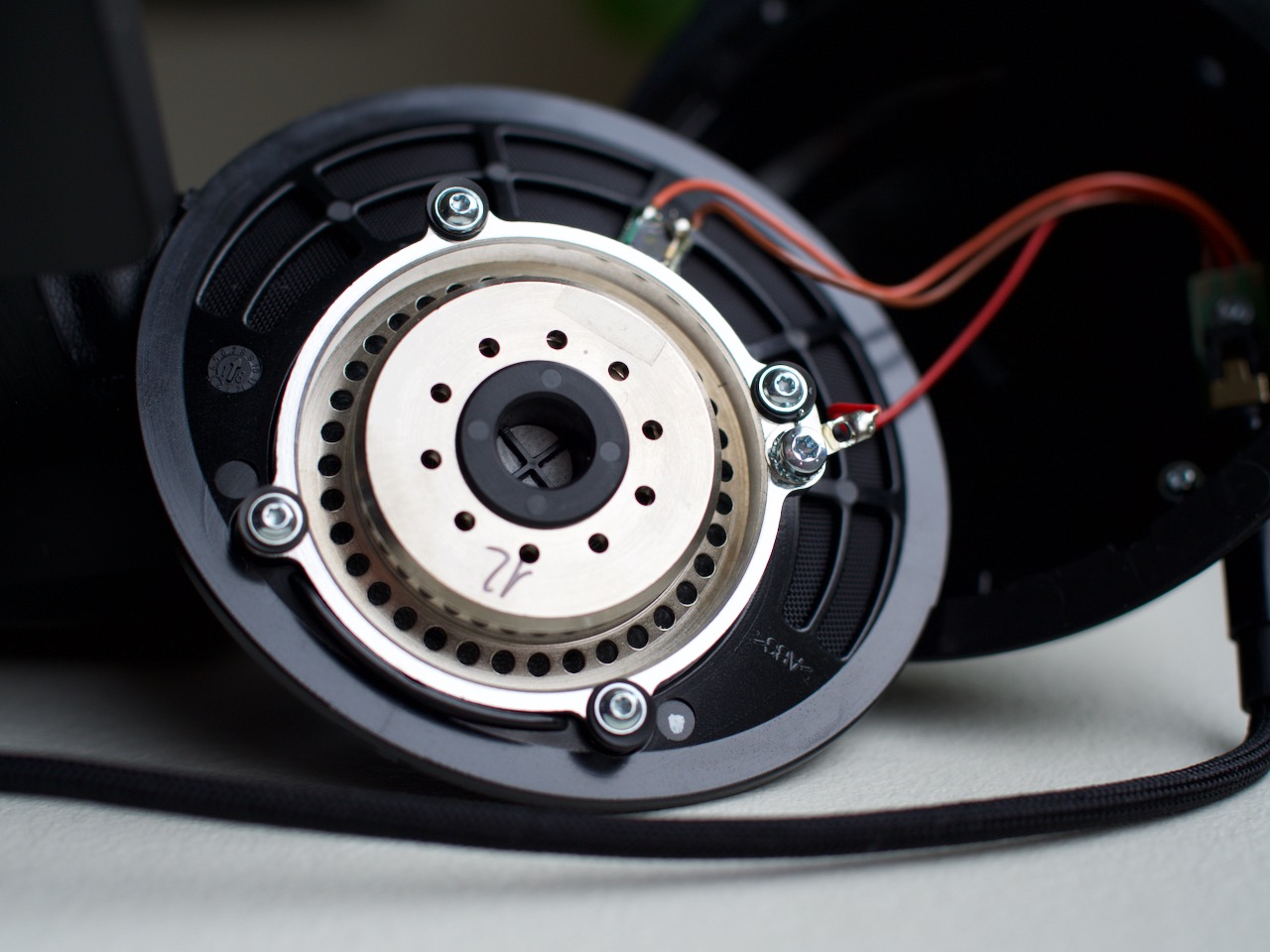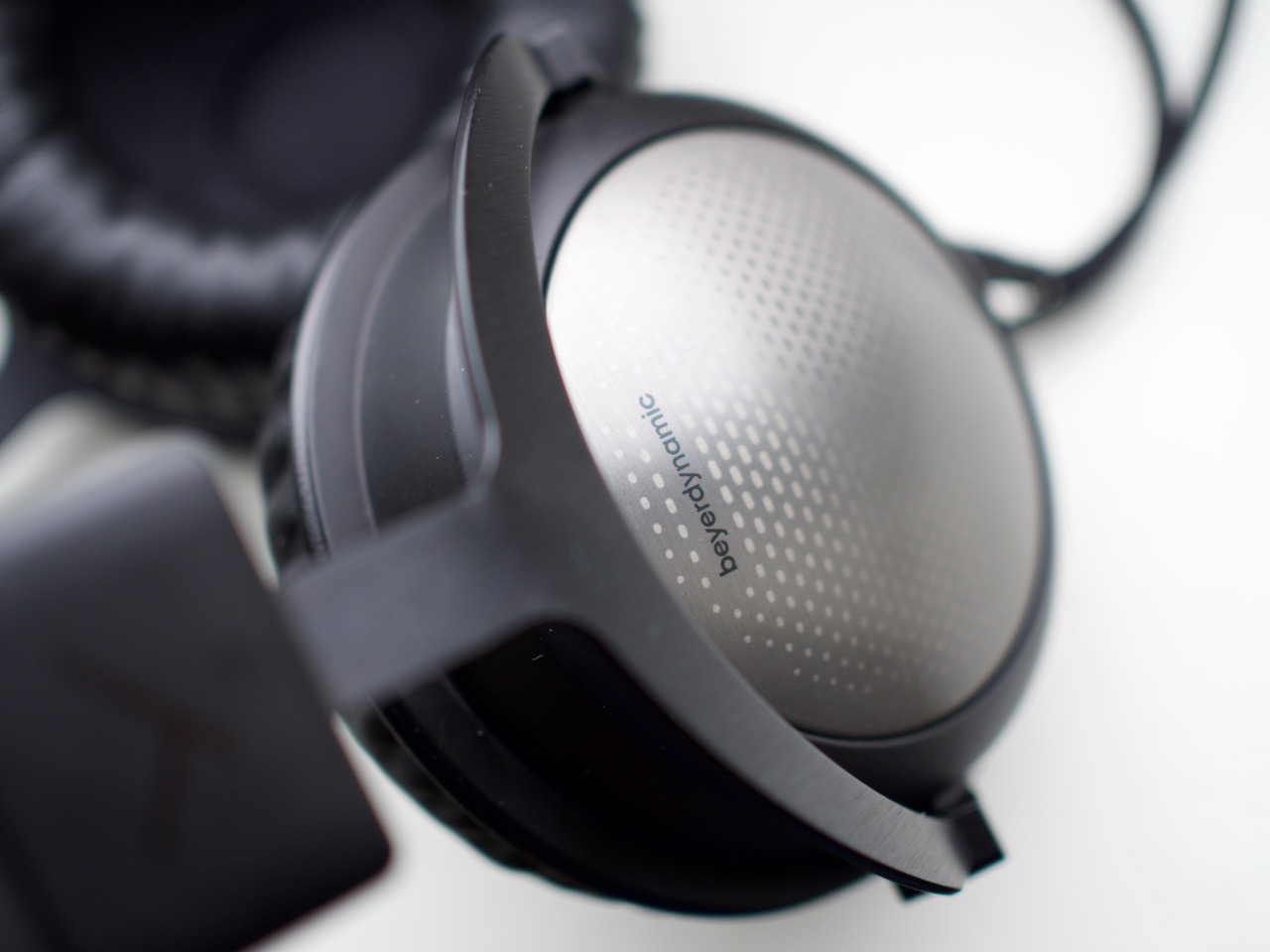The Beyerdynamic T5 is a legendary closed-back model in the headphones world, well known for its musicality and wide soundstage. It sits at the top of their wired hi-fi headphone range and contains the best technology Beyerdynamic has to offer, including their special Tesla dynamic transducer.
Today I'm looking at the newest version of the T5, the $999 Beyerdynamic T5 High-end Tesla Headphones (3rd Generation). It’s advertised as having a “more natural reproduction” of high-mid range frequencies than the 2nd generation model. The 3rd generation’s presentation is intended to be more “realistic,” meaning that the timbre of instruments and vocals should be more true to life.
(For the headphone junkies, this basically means a flatter frequency response in the upper mids, most likely a reaction to perceived peaks present in the 2nd Generation model.)
This headphone is ideally suited for at-home listening, but with its 32-ohm impedance and high-sensitivity, you could use it on the go with a digital audio player. But to hear it at its best, you need to use it with a quality headphone amp. That can range anywhere from a USB DAC/Amp like the Audioquest Dragonfly Cobalt, all the way up to an Amp/DAC stack like the Topping D90/A90.
If you have a good source, the T5 (3rd Gen) is capable of some mind-blowing sound. It has good detail retrieval, a natural midrange, and an excellent soundstage (especially for a closed-back headphone). However, there is also a bass bump and a little treble edge that won’t be for everybody. That said, If you find headphones with “flat” tuning to be “boring,” then the bold tuning of the T5 may be just what you’re looking for.
Read on for my full breakdown of Beyerdynamic’s latest flagship cans!
Disclaimer: These headphones are on loan from Beyerdynamic. They were provided with the understanding that we would write an honest, unbiased review.
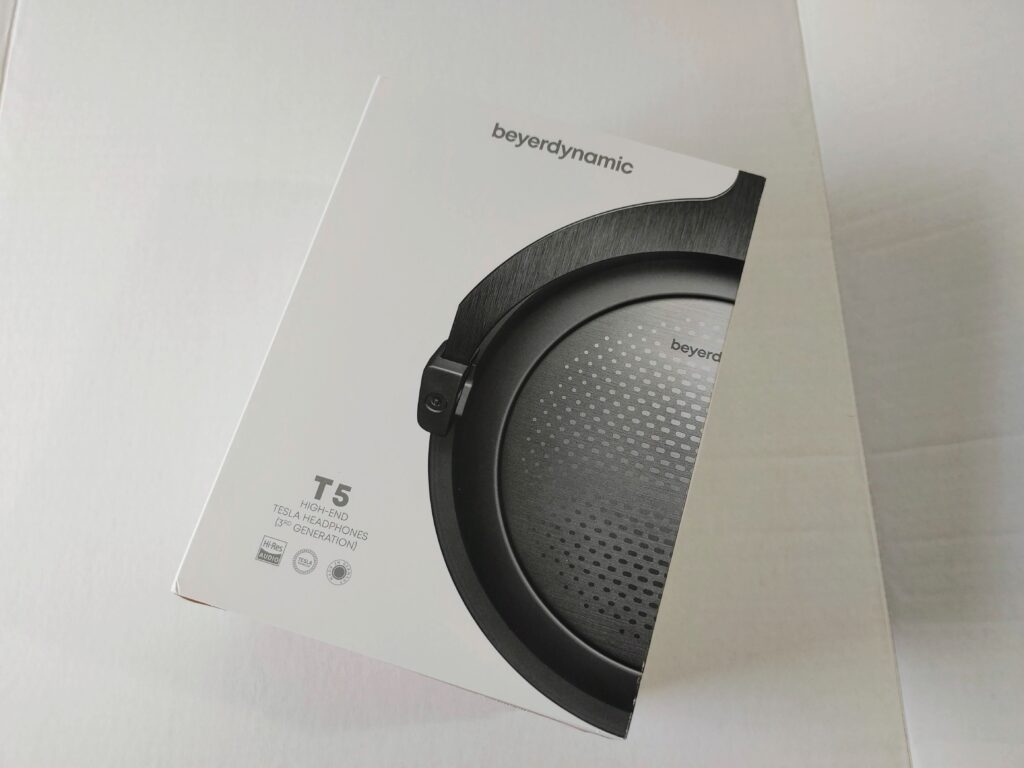
Build/Features
The latest T5 is a well-built, lightweight (360g) headphone with sufficient comfort to support long listening sessions. It’s a circumaural (over-ear) headphone, but the earcups are a little on the small side, so your ears may touch the inside of the earpads or the dampening material covering the drivers (especially if your ears are big like mine) when you have them on.
That said, I found the interior of the cups and the protein leather earpads to be quite soft, and I didn’t feel any discomfort while listening. The clamp is well-judged, allowing the headphones to sit securely on your head without putting it in a vise grip. Soft padding on the bottom of the headband ensures no pressure points on the top of the head. I did have to shift the earcups around to fit my ears in properly and get a good seal around my ears, which is important.
Speaking of the earcup interior, it’s designed with a tilt to position the drivers in line with your ear. That’s intended to give you a better sense of soundstage and imaging. More on that later.
By the way, the earcups also provide a nice amount of isolation from outside noise, so if you’re listening in a noisy environment, these headphones will provide some quiet.
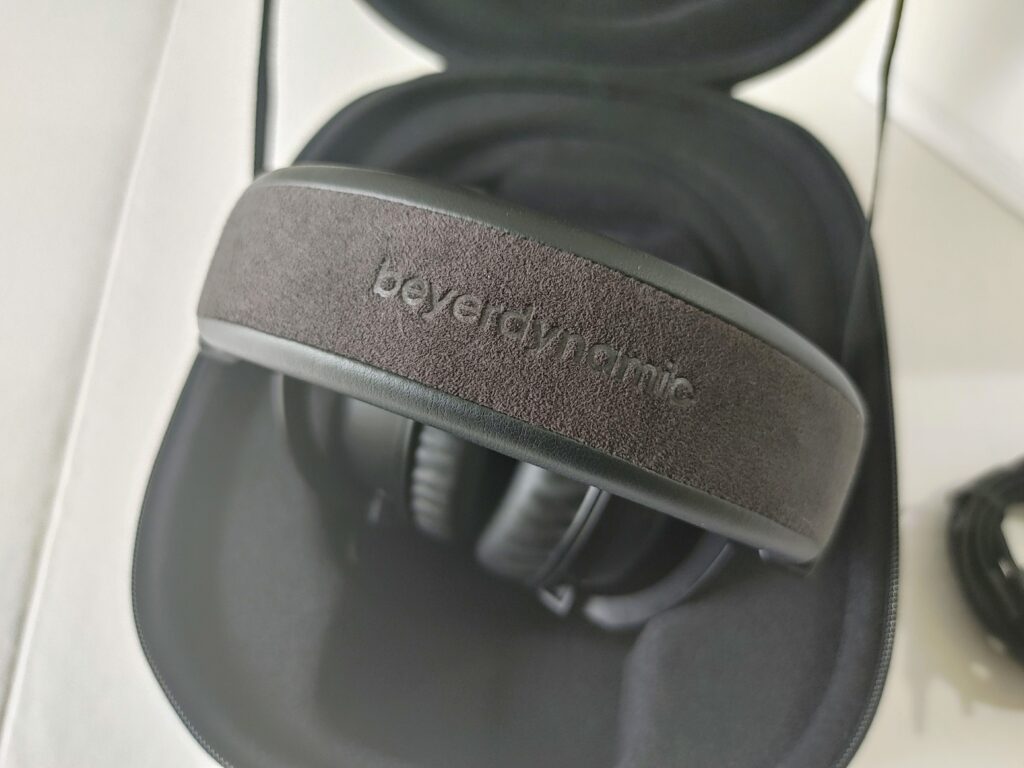
The T5 (3rd Gen) has an understated aesthetic, which is both minimal and luxurious at the same time. The brushed aluminum on the earcups and Alcantara (faux suede used on many luxury goods) accent on the headband add a touch of class without the bling present on the Amiron Copper Wireless, the last Beyerdynamic headphone I reviewed (and loved). I like the new T5 look; it's a lot cleaner than the last model.
Like the majority of Beyerdynamic headphones, this model is built like a tank, using hard molded plastic along with strong metal components for the headband and yokes. Each headphone is handmade in Germany to ensure quality.
As far as accessories go, it comes with a nice hard case covered in Alcantara fabric, a 3 meter (almost 10 foot) detachable Y-cable with a 3.5mm plug, and a ¼” adapter for connection to headphone amps.
The included cable is covered with a braided fabric, making it a little stiff out of the box, but it does loosen up over time. Additional XLR and 2.5mm balanced cables are available from Beyerdynamic. The case is on the large side so that you won’t be sticking it in your bag and running to the coffee shop, but it will provide a safe, clean place for your investment.
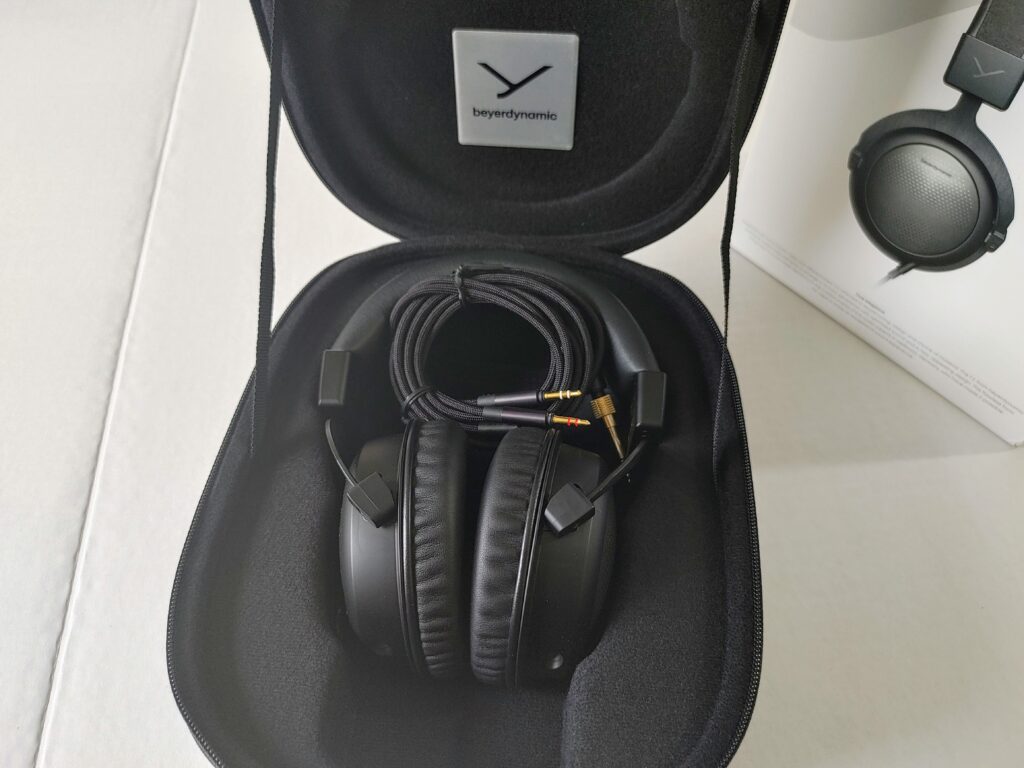
Listening to the Beyerdynamic T5 Headphones (3rd Generation)
For my sound tests, I connected the T5 to several DAC/Amp combinations connected to my HP Envy laptop via USB. I started with the $129 iFi ZEN DAC Dac/Amp, then added the $169 iFi ZEN Can headphone amp. Next, I tried the $699 iFi NEO iDSD Dac/Amp combination, then the Topping A90/D90 Amp/DAC stack ($1249 as a pair). All music was played from the TIDAL desktop app.
These options worked well with the T5 when it came to driveability, but as I moved up in source quality, there was a noticeable increase in sound quality at each step. That means you really want to have some quality amplification to get the best out of these. At the end of the day, I settled on the Topping stack, and that’s where my sound impressions come from.
Overall, the T5 (3rd Gen.) has a warm sound signature with some elevated treble and a bump in the midbass, which adds excitement to the sound. It’s not a flat reference tuning by any means, so those who like that kind of sound should probably listen to this headphone before buying. But if you’re the type who thinks flat = boring, then the T5’s sound is probably right up your alley.
The T5 has a lot of great detail on the top end, making strings, horns, and guitars sound exquisite. Transients and percussive attacks also come through clearly, which makes music come alive in a beautiful way. Instrument separation is excellent. There is some treble edge that comes through on some songs, so if you're sensitive to that sort of thing, that is something to think about. But overall, the treble is handled well.
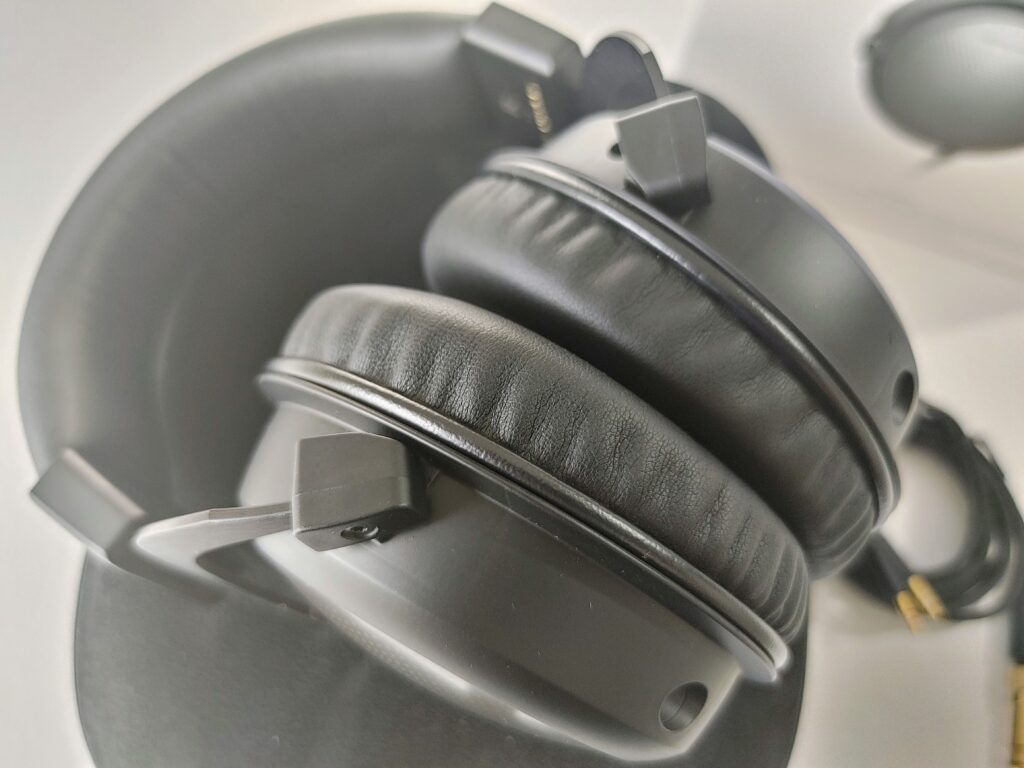
As far as bass/midrange is concerned, the midrange is handled very naturally for the most part. Flattening out the midrange seemed to be one of the main improvements advertised for this headphone, and I’ll say that was a positive. The mids sound quite realistic most of the time, and vocals, especially female vocals, are presented palpably with lots of emotion. Piano, horns, and strings again come across with a live realistic quality.
The bass will probably be the most divisive part of this headphone, as the midbass is pushed well above neutral. This does provide aural fireworks in the form of bass punch, dynamics, and weight, making the T5 a very exciting listen. But to me, it also makes the rhythm sound too exuberant in places.
If a song has a strong bass emphasis, instruments like drums can come across as too bloated, which I’m personally sensitive to. There also seems to be some bleed into the mids on the same songs, adding some coloration to deep male voices. Besides that, there also seems to be a sub-bass roll-off, which takes away some thump from places I expect.
When it comes to Soundstage and Imaging, I must say this is one of the T5s biggest strengths. The tilted drivers combined with the treble air in the frequency response make for a headphone that plays well outside of the earcup, remarkable for a closed-back headphone. It also images remarkably for a closed-back headphone, allowing you to pick out individual performers and instruments set out in front of you.
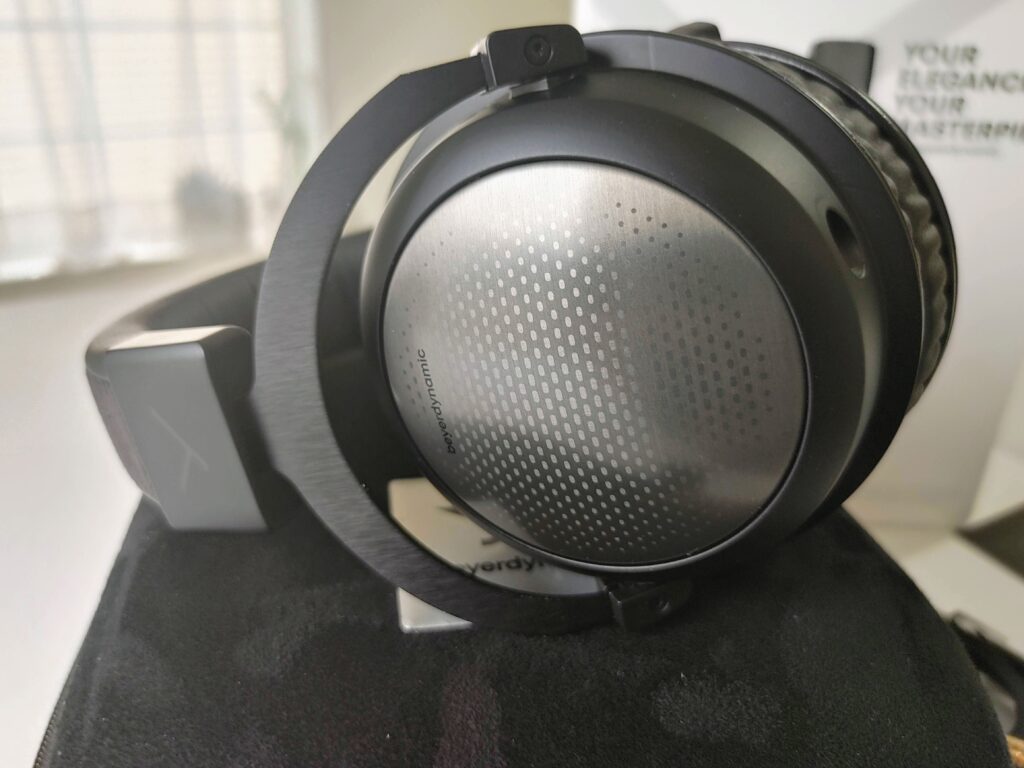
Playing Some Tunes
Listening to “Teach You” from Emily King’s “Sides,” I was really taken by how the T5 imaged and presented space. Being a duet (with Emily King and Sara Bareilles), it’s entertaining to hear the two spectacular vocalists' harmony and interplay. On a headphone that resolves well, like the T5, you can clearly hear the two singers' placement next to each other along with the distinct differences in their singing styles, which is mesmerizing.
I also put on the MQA version of “Lucky Seven” from Dave Holland’s “Good Hope” album, and I was amazed by how naturally the T5 reproduced the percussion darting all around the soundstage. The horn notes were a little edgy, and the bass notes had just a bit too much bass energy for my taste, but the excellent instrument separation and technical prowess of these headphones were undeniable. It also displayed the T5 great dynamics, as it moved from the initial quiet passage to the loud horn part without missing a beat.
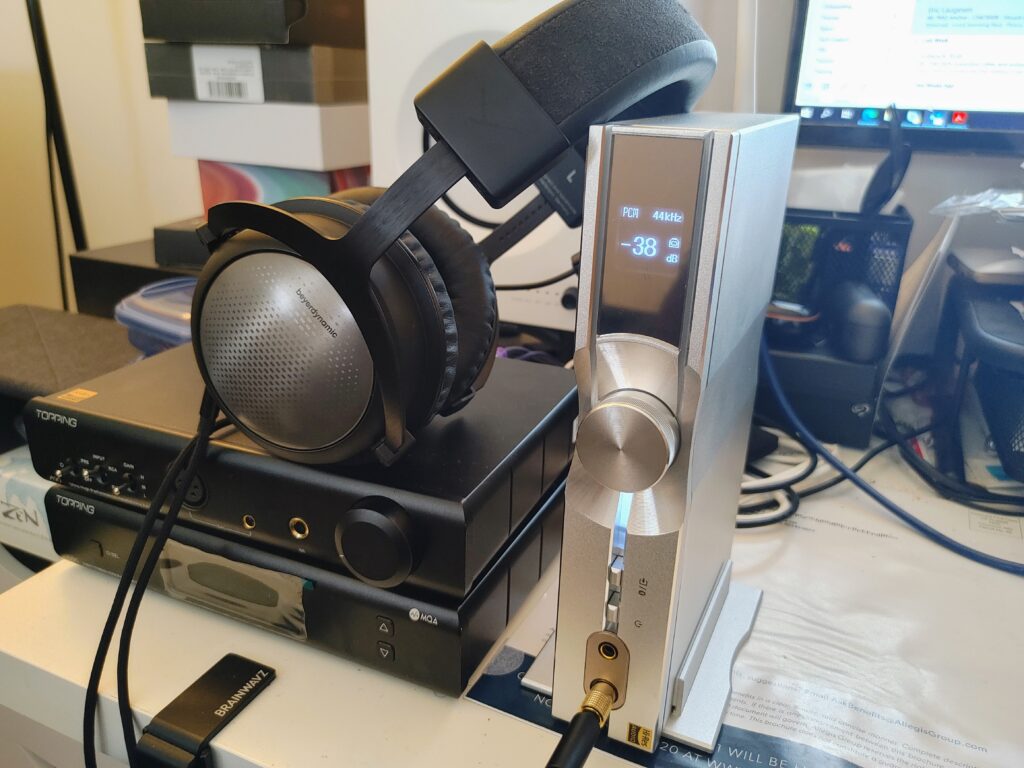
Compared to the Mr. Speakers AEON Flow Closed
The AEON Flow Closed (1st version) was the only other closed-back headphone I had on hand that was close to the T5’s price range, so I made a quick A-B comparison. Listening to the Lucky Seven song again, the AFC was definitely a lot less lively than the T5, exhibiting a lot less punch and dynamics. The T5 was just a more fun listen overall; its rhythm really just propelled the song forward in an exciting way that was pleasing.
The AFC, however, played the song with a little more microdetail (partially the planar’s driver character vs. the dynamic), allowing you to hear stuff like the hands beating on the congo drum (?), along with the individual notes coming from the horn. I appreciated the flatter tuning of the AFC since it allowed me to hear “into” the track more. Still, I can understand those who prefer the excitement of the T5; the AFC actually did sound a little “boring” next to the Beyerdynamic.
The Wrap Up
As I said initially, the Beyerdynamic T5 (3rd Generation) is a good looking, well built, lightweight headphone that’s comfortable for long listening sessions. They have just a little too much bass emphasis for my taste, but I couldn’t help but fall for the T5’s detail, naturalness through the midrange, astounding soundstage, and imaging. If you’re looking for a warm, closed-back headphone with hi-fi chops, then you should check this one out!
This review was originally published at hifitrends.com
Today I'm looking at the newest version of the T5, the $999 Beyerdynamic T5 High-end Tesla Headphones (3rd Generation). It’s advertised as having a “more natural reproduction” of high-mid range frequencies than the 2nd generation model. The 3rd generation’s presentation is intended to be more “realistic,” meaning that the timbre of instruments and vocals should be more true to life.
(For the headphone junkies, this basically means a flatter frequency response in the upper mids, most likely a reaction to perceived peaks present in the 2nd Generation model.)
This headphone is ideally suited for at-home listening, but with its 32-ohm impedance and high-sensitivity, you could use it on the go with a digital audio player. But to hear it at its best, you need to use it with a quality headphone amp. That can range anywhere from a USB DAC/Amp like the Audioquest Dragonfly Cobalt, all the way up to an Amp/DAC stack like the Topping D90/A90.
If you have a good source, the T5 (3rd Gen) is capable of some mind-blowing sound. It has good detail retrieval, a natural midrange, and an excellent soundstage (especially for a closed-back headphone). However, there is also a bass bump and a little treble edge that won’t be for everybody. That said, If you find headphones with “flat” tuning to be “boring,” then the bold tuning of the T5 may be just what you’re looking for.
Read on for my full breakdown of Beyerdynamic’s latest flagship cans!
Disclaimer: These headphones are on loan from Beyerdynamic. They were provided with the understanding that we would write an honest, unbiased review.

Build/Features
The latest T5 is a well-built, lightweight (360g) headphone with sufficient comfort to support long listening sessions. It’s a circumaural (over-ear) headphone, but the earcups are a little on the small side, so your ears may touch the inside of the earpads or the dampening material covering the drivers (especially if your ears are big like mine) when you have them on.
That said, I found the interior of the cups and the protein leather earpads to be quite soft, and I didn’t feel any discomfort while listening. The clamp is well-judged, allowing the headphones to sit securely on your head without putting it in a vise grip. Soft padding on the bottom of the headband ensures no pressure points on the top of the head. I did have to shift the earcups around to fit my ears in properly and get a good seal around my ears, which is important.
Speaking of the earcup interior, it’s designed with a tilt to position the drivers in line with your ear. That’s intended to give you a better sense of soundstage and imaging. More on that later.
By the way, the earcups also provide a nice amount of isolation from outside noise, so if you’re listening in a noisy environment, these headphones will provide some quiet.

The T5 (3rd Gen) has an understated aesthetic, which is both minimal and luxurious at the same time. The brushed aluminum on the earcups and Alcantara (faux suede used on many luxury goods) accent on the headband add a touch of class without the bling present on the Amiron Copper Wireless, the last Beyerdynamic headphone I reviewed (and loved). I like the new T5 look; it's a lot cleaner than the last model.
Like the majority of Beyerdynamic headphones, this model is built like a tank, using hard molded plastic along with strong metal components for the headband and yokes. Each headphone is handmade in Germany to ensure quality.
As far as accessories go, it comes with a nice hard case covered in Alcantara fabric, a 3 meter (almost 10 foot) detachable Y-cable with a 3.5mm plug, and a ¼” adapter for connection to headphone amps.
The included cable is covered with a braided fabric, making it a little stiff out of the box, but it does loosen up over time. Additional XLR and 2.5mm balanced cables are available from Beyerdynamic. The case is on the large side so that you won’t be sticking it in your bag and running to the coffee shop, but it will provide a safe, clean place for your investment.

Listening to the Beyerdynamic T5 Headphones (3rd Generation)
For my sound tests, I connected the T5 to several DAC/Amp combinations connected to my HP Envy laptop via USB. I started with the $129 iFi ZEN DAC Dac/Amp, then added the $169 iFi ZEN Can headphone amp. Next, I tried the $699 iFi NEO iDSD Dac/Amp combination, then the Topping A90/D90 Amp/DAC stack ($1249 as a pair). All music was played from the TIDAL desktop app.
These options worked well with the T5 when it came to driveability, but as I moved up in source quality, there was a noticeable increase in sound quality at each step. That means you really want to have some quality amplification to get the best out of these. At the end of the day, I settled on the Topping stack, and that’s where my sound impressions come from.
Overall, the T5 (3rd Gen.) has a warm sound signature with some elevated treble and a bump in the midbass, which adds excitement to the sound. It’s not a flat reference tuning by any means, so those who like that kind of sound should probably listen to this headphone before buying. But if you’re the type who thinks flat = boring, then the T5’s sound is probably right up your alley.
The T5 has a lot of great detail on the top end, making strings, horns, and guitars sound exquisite. Transients and percussive attacks also come through clearly, which makes music come alive in a beautiful way. Instrument separation is excellent. There is some treble edge that comes through on some songs, so if you're sensitive to that sort of thing, that is something to think about. But overall, the treble is handled well.

As far as bass/midrange is concerned, the midrange is handled very naturally for the most part. Flattening out the midrange seemed to be one of the main improvements advertised for this headphone, and I’ll say that was a positive. The mids sound quite realistic most of the time, and vocals, especially female vocals, are presented palpably with lots of emotion. Piano, horns, and strings again come across with a live realistic quality.
The bass will probably be the most divisive part of this headphone, as the midbass is pushed well above neutral. This does provide aural fireworks in the form of bass punch, dynamics, and weight, making the T5 a very exciting listen. But to me, it also makes the rhythm sound too exuberant in places.
If a song has a strong bass emphasis, instruments like drums can come across as too bloated, which I’m personally sensitive to. There also seems to be some bleed into the mids on the same songs, adding some coloration to deep male voices. Besides that, there also seems to be a sub-bass roll-off, which takes away some thump from places I expect.
When it comes to Soundstage and Imaging, I must say this is one of the T5s biggest strengths. The tilted drivers combined with the treble air in the frequency response make for a headphone that plays well outside of the earcup, remarkable for a closed-back headphone. It also images remarkably for a closed-back headphone, allowing you to pick out individual performers and instruments set out in front of you.

Playing Some Tunes
Listening to “Teach You” from Emily King’s “Sides,” I was really taken by how the T5 imaged and presented space. Being a duet (with Emily King and Sara Bareilles), it’s entertaining to hear the two spectacular vocalists' harmony and interplay. On a headphone that resolves well, like the T5, you can clearly hear the two singers' placement next to each other along with the distinct differences in their singing styles, which is mesmerizing.
I also put on the MQA version of “Lucky Seven” from Dave Holland’s “Good Hope” album, and I was amazed by how naturally the T5 reproduced the percussion darting all around the soundstage. The horn notes were a little edgy, and the bass notes had just a bit too much bass energy for my taste, but the excellent instrument separation and technical prowess of these headphones were undeniable. It also displayed the T5 great dynamics, as it moved from the initial quiet passage to the loud horn part without missing a beat.

Compared to the Mr. Speakers AEON Flow Closed
The AEON Flow Closed (1st version) was the only other closed-back headphone I had on hand that was close to the T5’s price range, so I made a quick A-B comparison. Listening to the Lucky Seven song again, the AFC was definitely a lot less lively than the T5, exhibiting a lot less punch and dynamics. The T5 was just a more fun listen overall; its rhythm really just propelled the song forward in an exciting way that was pleasing.
The AFC, however, played the song with a little more microdetail (partially the planar’s driver character vs. the dynamic), allowing you to hear stuff like the hands beating on the congo drum (?), along with the individual notes coming from the horn. I appreciated the flatter tuning of the AFC since it allowed me to hear “into” the track more. Still, I can understand those who prefer the excitement of the T5; the AFC actually did sound a little “boring” next to the Beyerdynamic.
The Wrap Up
As I said initially, the Beyerdynamic T5 (3rd Generation) is a good looking, well built, lightweight headphone that’s comfortable for long listening sessions. They have just a little too much bass emphasis for my taste, but I couldn’t help but fall for the T5’s detail, naturalness through the midrange, astounding soundstage, and imaging. If you’re looking for a warm, closed-back headphone with hi-fi chops, then you should check this one out!
This review was originally published at hifitrends.com


